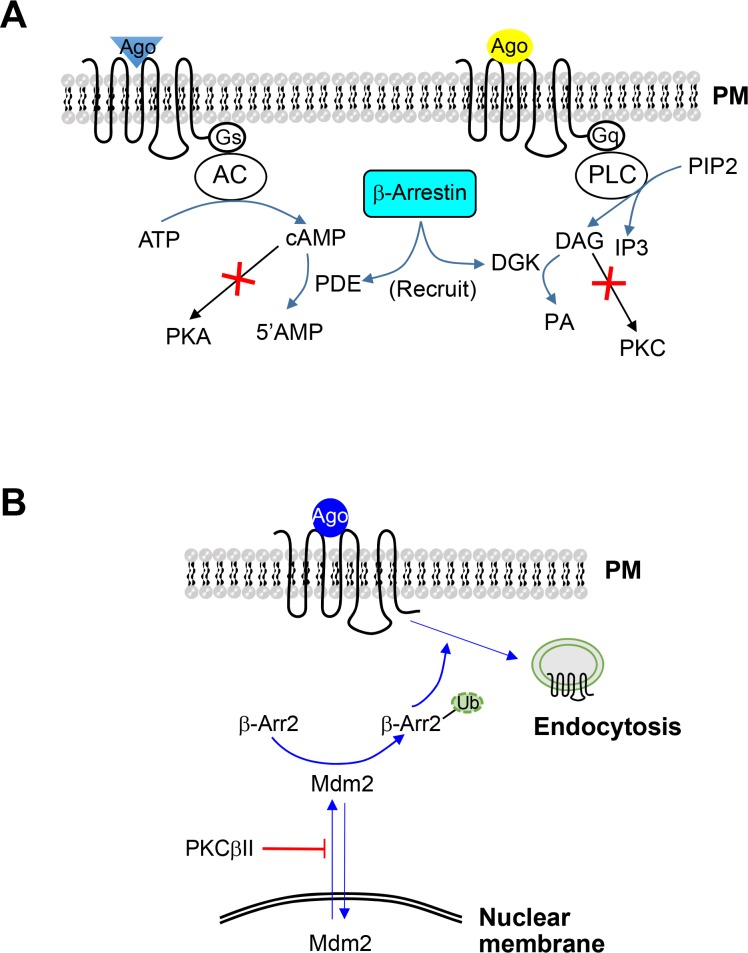Fig. 1.
Functional interactions between homologous and heterologous regulatory pathways of GPCRs. (A) Functional antagonism of βarrestins on Gs- or Gq-coupled receptors downstream of receptor-G protein coupling. For Gs-coupled receptors, β-arrestins recruit phosphodiesterases to inhibit cAMP accumulation. For Gq-coupled receptors, β-arrestins recruit DGK to convert DAG to phosphatidic acid. (B) Effects of PKCβII on β-arrestin2 ubiquitination. PKCβII inhibits β-arrestin2 ubiquitination by interfering with the nuclear export of Mdm2, which occurs in response to agonist stimulation of GPCRs that have a tendency to undergo endocytosis. Ago, agonist; PM, plasma membrane; AC, adenylyl cyclase; PKA, protein kinase A; PDE, phosphodiesterase; PIP2, phosphatidylinositol 4,5-bisphosphate; PLC, phospholipase C; DAG, diacylglycerol; IP3, inositol 1,4,5-trisphosphate; DGK, diacylglycerol kinase; PA, phosphatidic acid; PKC, protein kinase C; β-Arr, β-arrestin; Ub, ubiquitin; Mdm2, Mouse double-minute-2 homolog; cAMP, cyclic adenosine monophosphate; GPCR, G protein-coupled receptor.

